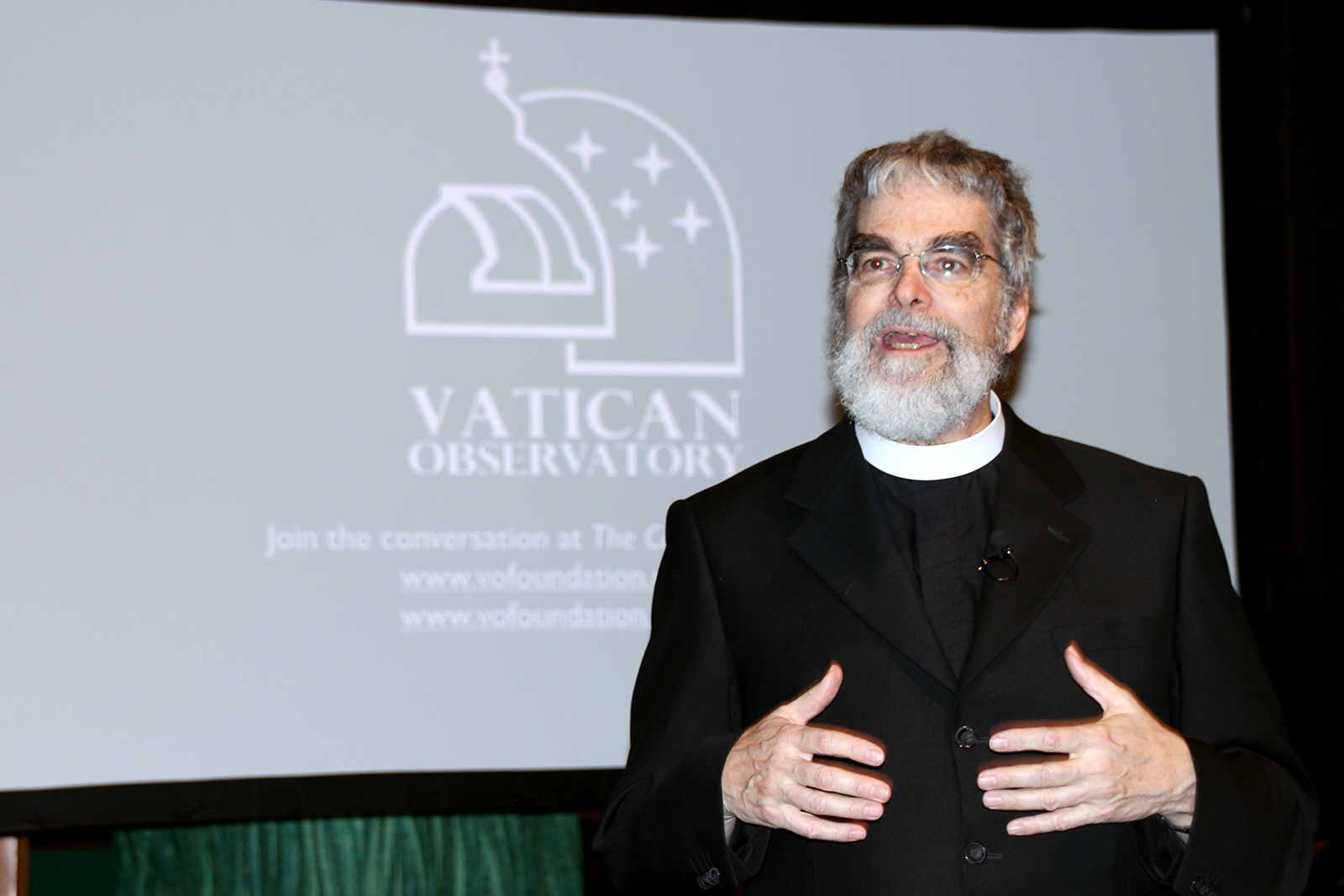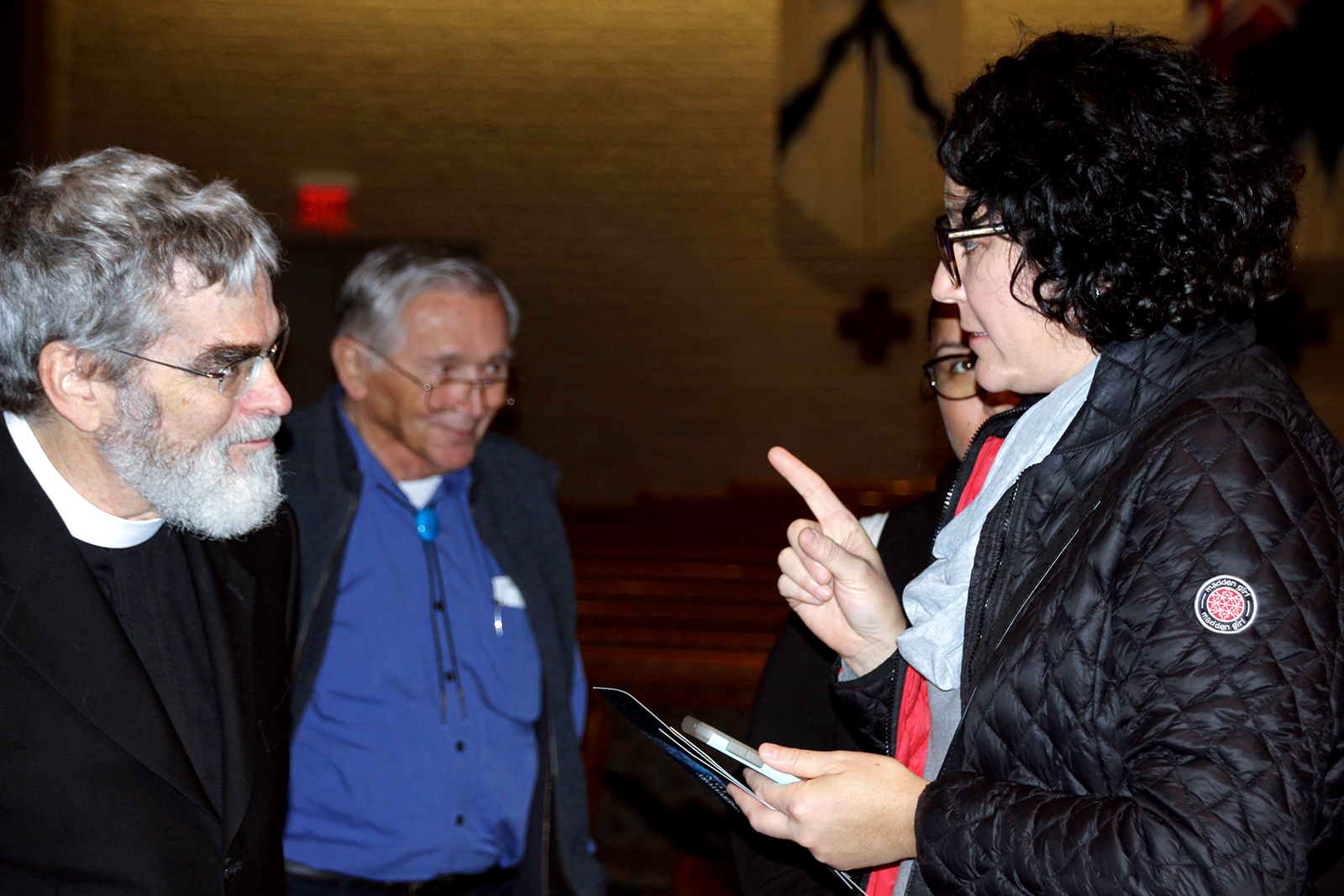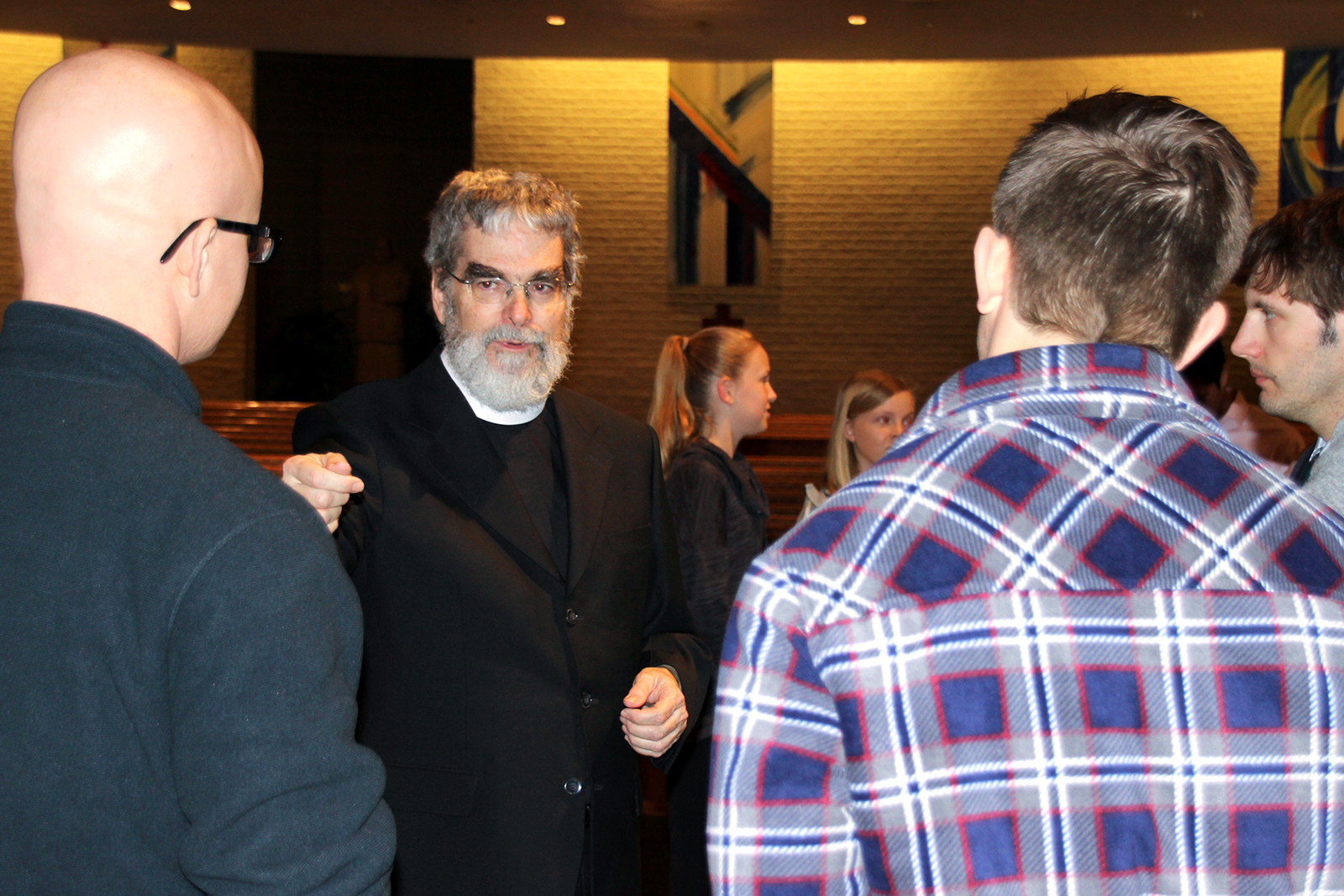

Vatican Observatory
The Vatican Observatory is an astronomical research and educational institution supported by the Holy See.
Vatican Observatory Foundation
The Vatican Observatory Foundation is the fundraising arm of the Vatican Observatory.
GLENDALE — Despite the perception that astronomy and, indeed, all science was incompatible with faith, Jesuit Brother Guy Consolmagno says it is, in fact, quite the opposite.
The Director of the Vatican Observatory since September 2015 and a holder of numerous degrees, including a doctorate in planetary science from the University of Arizona, Br. Guy told an audience of nearly 200 at St. Thomas More Church in Glendale Jan. 10 that there should be no doubt that studying the celestial bodies draws us into who God is.
“You could say, the universe is so big and I’m so small, the fact that God does know me, and each of us, tells us how immense God is,” he said.
Br. Guy’s work and that of the Vatican Observatory is hardly the beginning of the Church’s involvement in astronomy.
“Pope Gregory realized the calendar in use since Roman times was no longer accurately predicting the seasons or, more importantly for the Church, the Holy Days,” said Jim McGee, a member of the Vatican Observatory Foundation’s Board of Directors, who arranged Br. Guy’s presentation. The pope enlisted some Jesuit mathematicians to reform the calendar, he said, resulting in the Gregorian calendar used today.
The reformed calendar helped launch the earliest Vatican Observatories in the 1700s. In 1891, Pope Leo XIII formally re-founded the observatory on a hillside behind the dome of St. Peter’s Basilica. There the work continued until the 1930s, when, forced by the growth of Rome’s lights to look for darker skies, the observatory, with two new telescopes, was moved to the summer papal residence at Castel Gandolfo. Another 50 years saw the need again to escape the lights of urbanization, so the Vatican added a second research center in Safford, in southern Arizona, home to some of the world’s darkest skies. Atop Mt. Graham, the Vatican Advanced Technology Telescope allows observatory staff to collaborate with other researchers around the world studying the heavens and reporting to the pope annually.

Br. Guy and his colleagues are just the latest Catholics whose work has advanced the field and the understanding of the universe.
“Of course, we must mention one of the great Catholic astronomers of any time: Galileo. He was a devout Catholic before, during and after his trial for allegedly being a heretic. After his trial, he wanted to stay true to his Catholic faith,” Br. Guy pointed out.
Christopher Clavius, a Jesuit mathematician, used sunlight projected through a small hole built into the Vatican tower to calculate future Holy Days.
Two decades after Galileo, came Giovanni Battista Riccioli, an Italian astronomer and a Jesuit who produced the first accurate map of the moon.
Then came perhaps one of the field’s most significant figures — Fr. Angelo Secchi, a Jesuit priest and the first to classify stars according to their spectra — the various colors that indicate the wavelengths characteristic of various radiation types. Fr. Secchi was also interested in measuring the sun’s activity and connecting it to Earth’s magnetic fields.
“He invented astrophysics. Before then, astronomy was the study of positions. He completely changed the nature of astronomy.” Br. Guy said.

Helen Farris and Jan Tomko drove 90 minutes and 93 miles from their parish, Immaculate Conception in Cottonwood for the presentation.
“I was so impressed with the joy, his discoveries and what it tells him about God. God created [the universe] and it shows us who God is,” said Tomko.
McGee emphasized the need to answer the questions of the universe to learn about God.
“If we want to learn more about our faith, why we’re here, what our role is, we want to understand more about God’s role in the universe, we need to study the universe,” he said.





